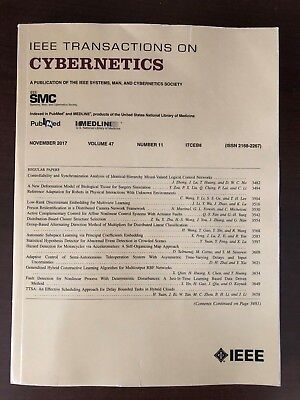Distributed Resilient Energy Management for Seaport Microgrid Against Stealthy Attacks With Limited Security Defense Resource
IF 9.4
1区 计算机科学
Q1 AUTOMATION & CONTROL SYSTEMS
引用次数: 0
Abstract
This article investigates the distributed resilient energy management (EM) strategy for the seaport microgrid under stealthy attacks. First, based on an analysis of seaport microgrid characteristics, we construct an EM model that aims at minimizing both operating cost and security defense resource (SDR) cost. Second, we present a distributed, resilient strategy by defining node security levels and establishing dynamic security intervals. We prove that the gap between the obtained feasible solution and the optimal one is bounded. The designed strategy is capable of tolerating the effect of the unlimited number of stealthy attacked nodes on the seaport microgrid. In addition, given the limited SDRs for the resilient EM of the island seaport microgrid, a distributed mechanism for searching the minimum security connected dominating set (MSCDS) is proposed to minimize the size of trusted nodes. Finally, simulation results demonstrate the effectiveness of the proposed strategy. Note to Practitioners: This article addresses the vulnerability of the seaport microgrid, a critical issue that impacts EM and disrupts seaport operations. Current approaches to seaport EM do not account for potential attacks. Meanwhile, existing methods for attack resilience often overlook the costs of security resources. We propose a new approach for the distributed and resilient EM of the island seaport microgrid. Secure operation is achieved by protecting the fewest trusted nodes, thereby conserving SDRs. We then show how this algorithm (searching the MSCDS) can be efficiently designed. Preliminary simulations indicate its feasibility, though it has yet to be tested in a production environment. Future research will focus on designing trusted nodes within dynamic topologies.港口微电网有限安全防御资源下的分布式弹性能源管理
本文章由计算机程序翻译,如有差异,请以英文原文为准。
求助全文
约1分钟内获得全文
求助全文
来源期刊

IEEE Transactions on Cybernetics
COMPUTER SCIENCE, ARTIFICIAL INTELLIGENCE-COMPUTER SCIENCE, CYBERNETICS
CiteScore
25.40
自引率
11.00%
发文量
1869
期刊介绍:
The scope of the IEEE Transactions on Cybernetics includes computational approaches to the field of cybernetics. Specifically, the transactions welcomes papers on communication and control across machines or machine, human, and organizations. The scope includes such areas as computational intelligence, computer vision, neural networks, genetic algorithms, machine learning, fuzzy systems, cognitive systems, decision making, and robotics, to the extent that they contribute to the theme of cybernetics or demonstrate an application of cybernetics principles.
 求助内容:
求助内容: 应助结果提醒方式:
应助结果提醒方式:


